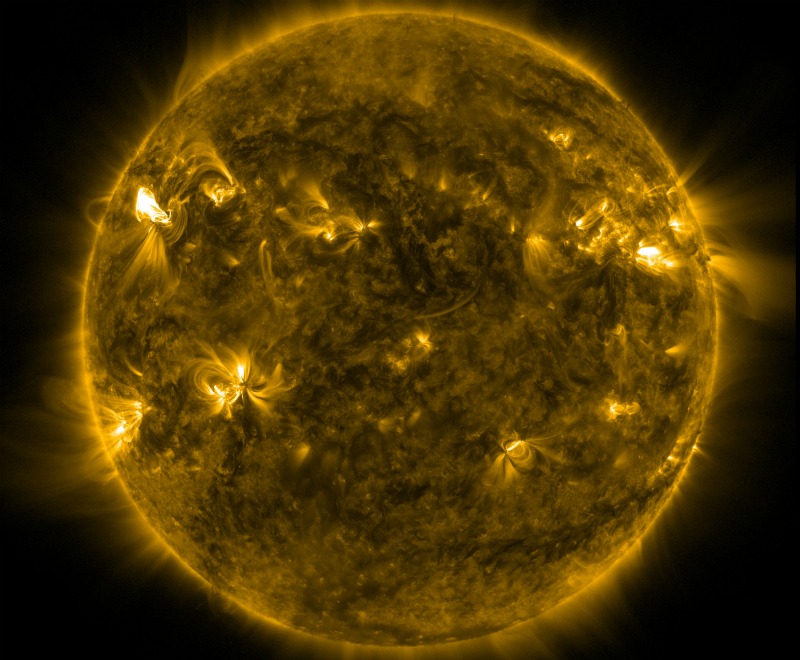
The Angry Sun: How to Predict Space Weather

Get ready for some solar action. Earth is entering a period where potentially damaging solar storms can wreak havoc on communications and satellites. That's what the experts at the Space Weather Prediction Center tell us.
But how do scientists know what the sun is going to dish out at us?
"We do just what you think we do — we watch the sun and watch for eruptive activity at coronal mass eruptions," said Joe Kunches, of the Space Weather Prediction Center in Colorado, and run by the National Oceanic and Atmospheric Administration.
The sun follows an 11-year weather cycle and the current cycle is known as Solar Cycle 24. The current cycle, scientists say, is in an active phase that is building up to a peak sometime next year.
Solar bursts
Coronal mass ejections (or CMEs) are solar eruptions of solar plasma that resemble the sun spitting fire from its surface. When the explosion is aimed toward the Earth and reaches the planet as an interplanetary shock wave of particles, it can cause a geomagnetic storm that may disrupt the Earth's magnetosphere. That disruption can mess with communications and GPS satellites, the stuff we depend on in everyday life. (These storms can also trigger fantastic aurora displays.)
Kunches says that predicting space weather can be like predicting the arrival of a hurricane. "It starts as a little ripple, then builds strength, and we're trying to predict when it will reach us," he told OurAmazingPlanet.
Sign up for the Live Science daily newsletter now
Get the world’s most fascinating discoveries delivered straight to your inbox.
The center employs about 50 people, and someone is always monitoring space weather around the clock, seven days a week, Kunches said.
Like hurricanes vary in their speed and path, space weather can vary in the time it takes to cross the 93 million miles (150 million kilometers) from the sun's surface to Earth. The fastest coronal mass ejections can arrive in 18 or 19 hours, Kunches said. During the fall of 2003, there was a series of coronal mass ejections that reached Earth in less than a day. [Worst Solar Storms in History]
"The more typical plasma clouds take 48-72 hours," Kunches said. That window gives the forecasters a bit more time to warn planes and communications providers that there could be a disturbance.
Solar cycle
The sun has operated on its 11-year solar cycle for millennia, but we've only just begun to notice its effects because so much of our affected technology is so new, Kunches said.
"The sun has been doing its thing for a long time, which we know because we can look at proxy data from ice cores and tree rings. Until we became technologically mature, we didn't care," he said. "Now that we have satellites and GPS, and communications like TV frequencies of radio, as well as manned space flight, it makes us care."
The space-weather-prediction field is also benefitting from new technology. A 2010 project dubbed the Active Magnetosphere and Planetary Electrodynamics Response Experiment (AMPERE) uses commercial satellites orbiting Earth to take magnetic-field measurements in real time. The result is output that has up to 100 times greater sampling density than previously possible — meaning that scientists are a bit closer to accurate, year-round space weather tracking.
"Starting two years ago, we are on the increasing side of the solar cycle," Kunches said. "From now until 2015, we can expect more eruptions from the sun. Then probably things will go back to quiet conditions."










